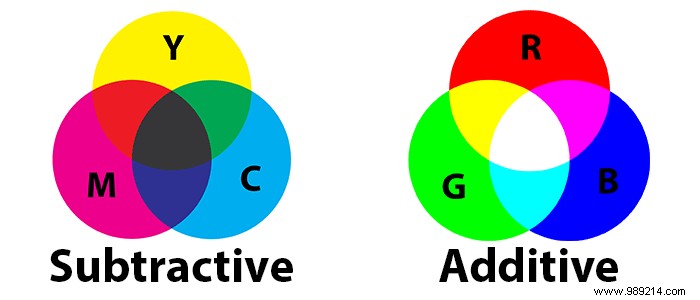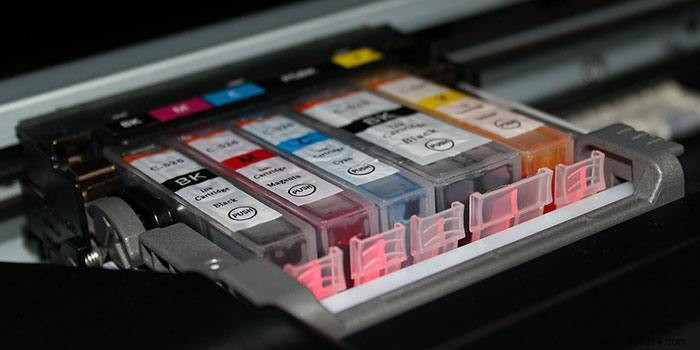Monitors use RGB to display images, but printers use CMYK. Why is there a difference between the two and why is it important?

When we create colors by mixing paint or ink, we are using subtractive color. CMYK, which mixes four colors of ink, uses subtractive color. If we mix all the colors together we get black, gradually subtracting the lightness as we mix more paint or ink. Starting with white paper, each addition of colored ink “subtracts” the available color from the starting medium. For pure white, we must leave the paper unprinted because nothing can be whiter than the paper it is printed on.
CMYK in particular, and subtractive color in general, have some weaknesses. When we mix inks, we cannot create as many colors as we would like. While cyan, magenta, and yellow can create a full spectrum of colors, the total amount of color, or "color space," is more limited than with RGB. Black is added to CMY to produce rich blacks; without a dedicated black ink, the best we can do is a muddy dark gray. In rare circumstances, special colors, called "spot colors", are added to prints.
For example, a commercial printer may use a special spot color for a client company's logo or brand color to ensure that it is reproduced exactly. When white light reflects off colored ink, some wavelengths are reflected more clearly than others. This is interpreted by our brain as a color.
The opposite of subtractive color, additive color, works the opposite of subtractive color. We start with darkness and gradually add brightness or lightness. The mixture of all colors gives white. Additive color (RGB specifically) is used for all kinds of display screens that contain red, green, and blue pixels that light up at different levels to create a full spectrum of visible colors. The more lights we shine, the closer we get to white, gradually adding lightness until we reach that point. Black is represented by turning off or evenly dimming pixels. When the light reaches our eyes, it is interpreted by our brain as the different colors of the rainbow.

So while RGB is capable of displaying more colors, CMYK is essential for representing color in printed media. Indeed, the physical reality of printing requires the use of CMYK inks. Although it is a smaller color space than RGB, it is the only way to create a continuous spectrum of colors with printed materials. Mixing red, green, and blue inks would produce a smaller mud patch, making it indistinct. We also cannot start with black paper and add light to it until we reach white, because light cannot be painted on a surface. This means that we are limited to using CMYK inks.